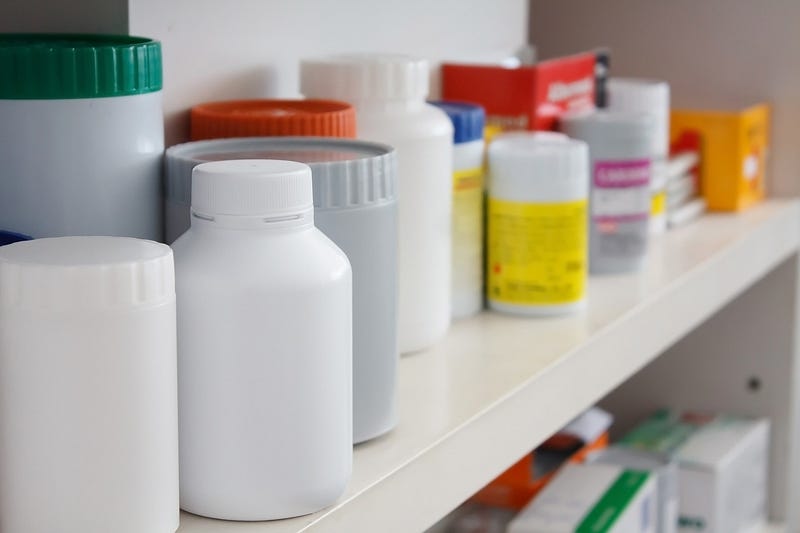(Not that) hard to resist: How humans contribute to antibiotic resistance
By Carleigh Sussman, Biology, 2020

Heart disease, cancer, and respiratory diseases are currently among the top five causes of death in 2019. However, these chronic illnesses have not always been the main worry. Flashback about 100 years, and pneumonia and tuberculosis firmly occupied those top spots. This may seem surprising; currently, bacterial diseases like pneumonia are not considered that great of a threat. We owe this protection to the discovery and optimization of antibiotics. Before antibiotics were what they are today, illnesses that now seem unimportant were the source of fatalities worldwide.
Antibiotics were first discovered in the 19th century. Most antibiotics are discovered naturally, and it is not until resistant lines present themselves that scientists must chemically modify the antibiotic or find alternative treatments. With penicillin and streptomycin as some of the first antibiotics discovered, the list has since rapidly expanded to over 100 in present day.
With these great strides have also come massive steps backward. In the past few decades, antibiotic resistance has become a growing problem. Though this seems relatively recent, bacteria have always been acquiring and sharing resistance. Multidrug resistant Tuberculosis as well as exceedingly resistant Staphylococcus aureus are two of the most commonly discussed resistant lines, but many more follow in their footsteps. A majority of this problem can be attributed to an excessive amount of human intervention: From doctor’s offices to farms, the misuse of antibiotics is practically ubiquitous.
The CDC reported in 2016 that one in three antibiotic prescriptions were unnecessarily prescribed.
Before discussing how human intervention propagates this issue, it is important to understand how resistance is acquired. Some bacteria have innate levels of resistance. Resistant bacteria are unique in that they naturally possess mutations making them less susceptible to treatment. Mutations are present because of random favored genetic variation. With these naturally resistant bacteria, although treatment with one antibiotic may kill off most of the infection, those that are resistant will survive. Resistant bacteria will replicate and can prolong the infection.
Other bacteria that do not naturally possess this resistance may develop acquired resistance via horizontal gene transfer (HGT). HGT is the transfer of DNA coding for resistance from one bacterial cell to another. The two underlying mechanisms where these genes can be acquired are transformation and conjugation. Transformation is the attainment of genetic material from a dead cell, while conjugation is the transfer of genetic material between two living cells. By spreading antibiotic resistance through exchange of genetic material, HGT contributes to antibiotic resistance. Although this series of events is the most commonly understood resistance transaction, many other methods of human intervention encourage the propagation of this process.
By spreading antibiotic resistance through exchange of genetic material, horizontal gene transfer contributes to antibiotic resistance.
The doctor’s office is most heavily associated with misuse of antibiotics. The CDC reported in 2016 that one in three antibiotic prescriptions were unnecessarily prescribed. There is no doubt that this percentage has climbed since. For instance, many insurance companies have made it significantly easier to receive antibiotics by eliminating visitation hours completely. Some services allow patients to instead speak to a medical operator. Patients describe their symptoms over the phone and are notified shortly after when their prescription is ready. The implementation of this service makes misprescription and overprescription more common and likely. Additional antibiotic exposure encourages bacteria to adapt and become resistant. With our lack of caution we are encouraging the problem.
The doctor’s office is not the only frontline for this issue. Another culprit is the agriculture industry. Antibiotics are frequently fed to animals before their products are collected and sold to consumers. In some cases, these antibiotics are administered as preventative measures, protecting animals against common diseases. However, antibiotics are more commonly used to increase the output of each animal. Animals on antibiotics grow faster, bigger, and produce more products, like milk and eggs. Antibiotics, in this instance, are used to maximize capital; they add monetary benefit by increasing yield. These implementations have negative effects. While we consume the products of the antibiotic-pumped animal, we are also consuming residual antibiotics and are therefore subjecting ourselves to additional antibiotic consumption. This increased exposure is unnecessary and encourages further resistance.
Everyday, antibiotic resistance becomes more of an issue. However, this issue is almost entirely human-driven. This idea emphasizes how much control we can have over the situation. More attention must be drawn to this issue, and preventative measures must be put in place to control antibiotic resistance before it gets any worse.
American Society for Microbiology (2010). DOI:10.1128/MMBR.00016–10
Public Health Reports (2012). DOI:10.1177/003335491212700103
Virulence Mechanisms of Bacterial Pathogens (2016). DOI:10.1128/microbiolspec.vmbf-0016–2015
